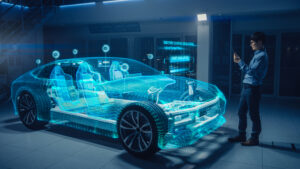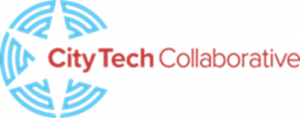Strategies, linkages, and lessons for the parking, transportation and mobility industry.


By RACHEL YOKA, CAPP, LEED AP BD+C,
The United States Green Building Council (USGBC) and the Green Business Certification Institute (GBCI) administer multiple certification standards in addition to LEED standards. One of these standards will be familiar to our readers: Parksmart. The Parksmart program promotes sustainable and high-performing garages and parking garages through certification at multiple levels.
GBCI also administers certification and credentialing for a relatively new certification standard dedicated to promoting buildings that maximize the opportunities for both human health and environmental sustainability: the International WELL Building Institute™ (IWBI™).
Those familiar with the triple-bottom line of people, planet, and profit, will recognize the importance of human health and wellness in this concept. Our health and wellness intersect with the environments where we spend most of our time. LEED criteria address these concepts in many cases, examining air quality, lighting, comfort, and general environment through multiple strategies to improve our experience in residential, office, and other property types.
Over the course of a 30-year building lifecycle, personnel costs account for more than 90 percent of costs, dwarfing design and construction costs of 2 percent and operations and maintenance costs of 6 percent. No matter what industry, those numbers are telling—and addressing human health and wellness to the benefit of both individuals and organizations makes financial sense, as well as good stewardship of our most important asset—our people.
Fundamentals of the WELL Building Standard
WELL addresses buildings and the features that have impacts to human health and wellness. Given that we spend nearly 90 percent of our time indoors, the impact of the quality of our natural environment as well as the quality of our built environment cannot be understated.
The standard is an “independently verified, performance-based system for measuring, certifying and monitoring features of buildings that impact human health and well-being.” More than 100 features address areas including nutrition, fitness, mood, sleep patterns, productivity and performance. These features may deal with operations and design, of the impact to human behavior. Certification may be achieved at silver, gold, or platinum levels.
More than 100 million square feet have been registered or WELL-certified, including projects in the U.S., Canada, Mexico, the UAE, Europe, and Australia. WELL is flexible across multiple building types and offers pilot programs for multifamily residential, education, retail, restaurant, and more.
The standard addresses seven concepts: air, water, nourishment, light, fitness, comfort, and mind. These concepts provide the top-level structure for the certification program. (For comparison purposes, Parksmart contains four primary categories: Management, Programs, Design and Technology, Innovation). In WELL, these seven concepts include more than features, which may be considered comparable to Parksmart measures. Each feature includes multiple parts that may be reviewed in the certification standard.
LEED or Parksmart
Both programs are initiated with registration through an online platform and applicants provide documentation to substantiate features (or measures).
One key difference is that WELL requires performance verification, which is a series of onsite, post-occupancy performance tests to monitor building performance after occupants have moved in. Certification is earned once the project has documented compliance with selected features and passed performance verification. A second key difference at this time is that recertification is required after three years to make sure that the building maintains the desired level of design, maintenance, and operations. This is a critical step to ensure that buildings are functioning as they were designed to and that the desired behaviors of occupants match the planned outcomes, allowing operations to be recalibrated if those results don’t match what is planned.
WELL breaks up certification standards into three primary groupings:
- Core and Shell
- New and Existing Interiors.
- New and Existing Buildings.
The first two apply to different owner/tenant splits depending on how much of the building remains in the control of the building owner. New and Existing Buildings will be most familiar in the parking, transportation, and mobility industry, addressing the entire scope of design and construction, and some elements of operations.
Point Structure
Preconditions, which are known as prerequisites in LEED, must be achieved and may be considered non-negotiable. Similarities exist to IPMI’s Accredited Parking Organization (APO) program; the accreditation mandates that 25 required criteria are achieved as a baseline. Optimizations, known as measures in Parksmart, are selected and documented from a total of 59 available choices.
New and Existing Buildings must achieve 41 preconditions in the certification system for Silver Certification. The system includes 59 possible optimizations. Buildings that meet 40 percent of the applicable optimizations earn Gold, and 80 percent earn Platinum. Pilot programs (including communities and multifamily residential and educational building types) offer similar point structures.
Preconditions in the New and Existing Building category include aspects such as air quality standards, construction pollution management, fundamental water quality, visual lighting design, interior fitness circulation, activity incentive programs, accessible design, post-occupancy surveys, and beauty and design.
Optimizations include air quality monitoring and feedback, water treatment, responsible food production, daylight modeling, exterior active design, physical activity spaces, and adaptable spaces, as well as innovation points.
Fitness
Of the seven concepts in the system, the parking, transportation, and mobility industry may find the features provided in the fitness section most relevant. This concept supports the “integration of physical activity into everyday life by providing opportunities and support for an active lifestyle and discouraging sedentary behaviors.” There are multiple linkages where as an industry we can apply WELL strategies, including:
- Interior fitness circulation.
- Activity incentive programs.
- Exterior active design.
- Physical activity spaces.
- Active transportation support.
The next section addresses each of these five elements and their potential adaption to our industry and its facilities.
Interior fitness circulation
This precondition addresses stair accessibility and promotion as well as design. One staircase in buildings with two to four floors should be accessible to building occupants and provide wayfinding and visual prompts and should be both clearly visible and within 25 feet of the primary entrance, lobby, or welcome area. Stair width must be 56 inches between handrails and or allowable by code. In addition, this addresses aesthetics; two of the following must be included: artwork, music, daylighting, view windows, designated lighting levels, or biophilic elements. (Biophilia, as defined by Wikipedia, is the inherent human inclination to affiliate with nature.)
The design of staircases and related wayfinding is a natural fit for our parking and transportation facilities and may be simply applied to new designs. This concept can and should be extended to potential walking and biking trails to and from parking facilities to the desired destinations.
Stairwell exemplifies interior fitness circulation element through its daylighting and biophilic views.
Activity incentive programs
For this precondition, the project must implement two programs for all full-time employees (FTEs). Although not a comprehensive list, most relevant to our industry are tax-exempt payroll deductions relating to active transportation or mass transit or subsidies towards annual bicycle share membership.
The widespread adoption and promotion of transportation demand management (TDM) policies and programs in the parking and mobility industry relates directly to this feature. Please see page 34 for a detailed summary of TDM in this issue, or download the resource in the IPMI resource center at parking-mobility.org/resource-center.
Exterior active design
This optimization (to reiterate, these optimizations are potential, and not required), addresses pedestrian amenities, pedestrian promotion, and neighborhood connectivity. Pedestrian amenities include benches, clusters of movable furniture for outdoor seating, drinking fountains, or water stations. To promote active pedestrian circulation, elements include water features, plazas or open-air courtyards, gardens and landscaped elements, and public art. Neighborhood connectivity incorporates high Walk Scores® and additional diverse uses as identified by LEED BD+C within a half-mile.
Some of our members’ facility designs take these concepts to the next level; Park(ing) Day culminates in these expressions on an annual basis. The image on the next page showcases both exterior active design as well as other criteria addressed in this article.
Physical activity spaces
This optimization aims to promote physical activity through designated free indoor exercise space as well as external opportunities for exercise. External spaces must be complimentary and within a half-mile walking distance:
- Green spaces/parks with playground features.
- Workout station or fitness zone.
- Trail network.
- Accessible body of water or public swimming pool.
- Gym or fitness center.
- Recreational fields.
The more recent application of rooftop fields and similar spaces on parking facilities provides a terrific opportunity to place these facilities in close proximity to the building seeking WELL certification.
Active transportation support
The Centers for Disease Control defines active transportation as “any self-propelled, human-powered mode of transportation, such as walking or bicycling.” This optimization covers bicycle storage and support, addressing distances to the main entrance as well as bicycle maintenance tools and bicycle storage. Storage must be provided for at least five percent of regular building occupants, in addition to shorter-term storage for 2.5 percent of peak visitors. Post commute/fitness facilities are also addressed in this part, requiring both showers and lockers. TDM programming, LEED, APO, and Parksmart directly address active transportation support, especially in the form of bicycling facilities and bike-share.
Additional Considerations
One of the core concepts in the standard is Mind. This concept addresses the complex connection between mental health and building design. A building may be designed to support and reinforce a health mental state.
Beauty and design
This required precondition’s intent is “to thoughtfully create unique and culturally-rich spaces.” More qualitative than quantitative in its approach, the project must contain features that promote human delight; celebration of culture, spirit, and place; and integration of public art.
Biophilia
Design in our buildings can use or mimic natural elements. This optimization addresses how to incorporate nature through the development of a biophilia plan (environmental elements, lighting, and space layout), the incorporation of natural patterns, and opportunities for interactions between people and nature both indoors and outdoors. An addition optimization addresses this concept further in the areas of outdoor biophilia (landscaped areas or accessible rooftop gardens) indoor biophilia (wall and potted plantings in interior spaces), and multiple water features.
Altruism
This optimization covers charitable activities through the provision of paid time on or off the clock for volunteer opportunities, as well as financial contributions. Our community is well-versed in the benefits of connection to charitable causes for both employees and patrons; The Parking Professional has featured the generous Donations for Citations and related programming showcased by our IPMI members; see p. 27 in the November 2017 issue for more.
Innovation
The innovation concept allows for greater creativity and expansion of the WELL standard into the future. Both LEED and Parksmart offer innovation points to address aspects not covered in the current version of the standards. Innovation proposals may extend beyond the current requirements or thresholds, or contain a new concept.
Takeways and Next Steps
This overview of the WELL standard merely touches the concepts of human health and wellness, our built environment, and relevance to the parking, transportation, and mobility industry. However, there are two key takeaways that we as an industry can utilize as a starting point.
1.Our human health is inextricably linked to our physical environment. As parking, transportation, and mobility professionals, we have the ability—and the opportunity—to make a massive impact on the health and wellness of our communities through our planning, design, operations, and programming.
2.The IPMI Accredited Parking Organization program, TDM, LEED, Parksmart, and WELL all pursue similar, related, and intertwined outcomes. High-performing buildings are sustainable. High-performing operations are profitable. Healthy, productive, and high-performing people are both. We should as an industry continue to explore these concepts and magnify these programs’ collective impacts together—to maximize our positive and profound impact on our individual communities.
Read the article here.
To find out more about WELL, visit wellcertified.com.
To jump in the fray and explore what these concepts mean for us in the future, contact me. I can’t wait to hear your feedback.
RACHEL YOKA, CAPP, LEED AP BD+C, is IPMI’s vice president for program development. She can be reached at yoka@parking-mobility.org.
 By Brett Wood, CAPP, PE
By Brett Wood, CAPP, PE
 By Ben Wesley, CAPP
By Ben Wesley, CAPP






